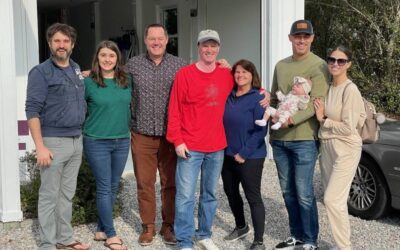People have long used co-ownership and fractional ownership to make vacation homes more affordable, efficient and accessible. The concept of vacation home co-ownership is particularly popular in the U.S. right now as over 2 million co-owned vacation houses exist across the country.
Three factors make vacation co-ownership particularly attractive right now:
- Demand for second homes is higher than ever.
- The sharing economy is stronger than it has ever been.
- Home prices and mortgage rates are increasing.
High Demand for Second Homes Makes Co-ownership Attractive
56% of Americans say they want a second home (up from 47% before the pandemic), and mortgage locks on second homes are up 9%. This demand is driven by the acceleration of remote work and the appetite of millennials for authentic life experiences. The reality is that there just isn’t enough housing stock in vacation markets to fulfill the demand, so mechanisms that allow multiple owners to enjoy the same property make a lot of sense in today’s market.
Sharing the Burden of High Prices and Rising Mortgage Rates Makes Sense
Home prices in seasonal vacation areas have risen 20% year over year as of February of 2022, marking an 18 month run of 10% YoY growth. With the average 30-year mortgage now averaging above 5.3%, the typical monthly mortgage payment has increased by about $520. Co-ownership dramatically lessens the impact of these cost increases. If a group of 5 co-owners share a $500/month increase in mortgage payments, each co-owner is only being impacted by $100/month, a much more manageable proposition.
Today’s Second Home Buyers Are Well Versed in the Sharing Economy
The sharing economy is one of the most impactful business trends in the modern era, with over $23B in venture investments driving an expected $335B in global sharing economy revenues by 2025. Crowdfunding and peer-to-peer lending will grow at a 63% rate in 2022. The tech-savvy millennials who are driving this trend are also quickly becoming the largest buyers of second homes. This generation is not only comfortable with the mechanisms of the sharing economy, but they demand it for its efficiencies and benefits.
Timeshares Are in Decline
Timeshares have existed for several decades as a means of creating ownership opportunities in vacation areas. There are over 9.6M timeshare owners in the US. That said, the timeshare industry is in rapid decline. In 2020, US timeshare revenues dropped 54% in one year in 2020 from $10.9B to $4.5B. This massive decline is due to changing consumer expectations and was accelerated by the pandemic. Timeshares have a reputation of high pressure sales tactics, a lack of availability, and an inability to sell one’s share without a loss in value.
Innovative Co-ownership Models Are Rapidly Growing
Where as timeshare companies were selling the right to use a property for a certain amount of “time,” fractional ownership and co-ownership models are helping consumers buy actual equity in a vacation property. Most co-ownership models achieve this by letting consumers buy shares of a company that owns real estate, and then granting usage rights as a benefit. The most common models are:
-
Fractional Ownership in a Resort
Usually offered in a resort with multiple units. Similar to timeshare in that it’s a fully managed experience, but the ownership stake is associated with real equity.
-
Premium Fully Managed Co-ownership
The homes in these models are fully managed luxury properties, and are generally single residences, not resorts. One generally buys a ⅛ share of a limited-liability company (LLC) that owns the house, and that share is typically in the $500k-$1.5M range. It is a tremendous offering for high net worth individuals, but out of reach of most Americans. Pacaso and Ember are examples of leaders in this model of co-ownership.
-
Co-Ownership for Everyone
This model also uses the LLC structure, but provides flexibility for anywhere from 2 to 12 co-owners. This approach makes it easy for groups to form, to set the rules, to buy any home together, and to manage that home gracefully. This model is significantly more affordable and flexible, and caters to tens of millions of Americans who prefer to take on more decision making and responsibility in exchange for more affordability and accessibility. Plum CoOwnership provides this offering to co-owners and the real estate agents who serve them.
There’s Never Been a Better Time for Co-Ownership
With demand for second homes higher than ever, and the sharing economy driving significant innovation, there’s never been a better time to explore co-ownership. Co-owners enjoy the ability to significantly reduce costs and risks, while satisfying their desire for authentic, convenient and familiar vacation experiences in a second home that they can call their own.




